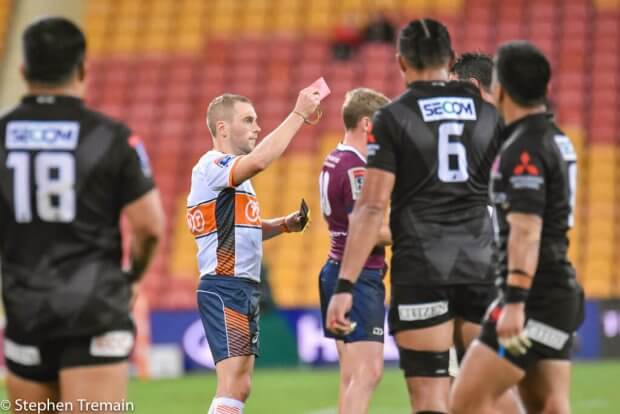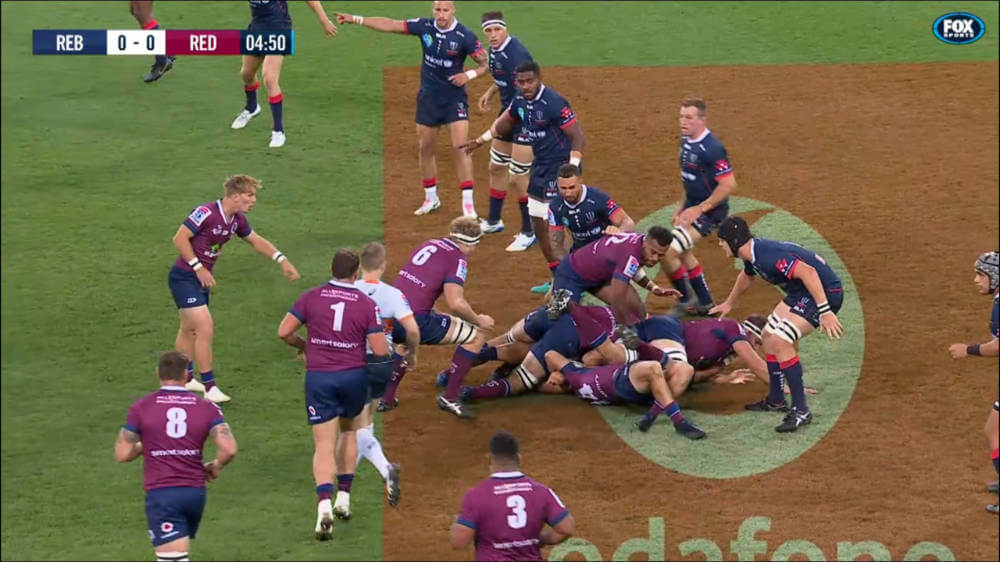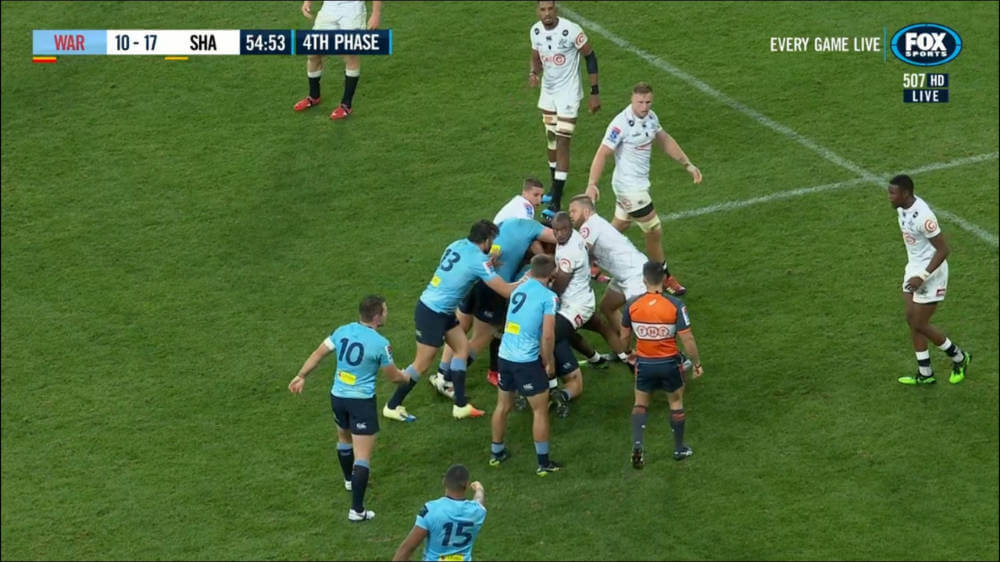Refereeing is in the spotlight in the wake of South African referee Egon Seconds being stood down after a combined 31-3 penalty count in favour of the Lions against both the Rebels and the Waratahs. In other major sports such as soccer and cricket, referees and umpires aren’t really necessary for casual games, but what makes rugby unique is the sheer number of grey areas that are open to interpretation.
The headline of this article might indicate that I am going to tear some of these refereeing decisions apart. However, the adage goes that it’s a lot easier to make a call when you’re watching it on a 4k TV screen from 6 different angles in slow motion than it is to make a call when it’s happening right in front of you in real-time and an instant decision is necessary. World Rugby and SANZAAR are also responsible for the appointment of referees, and if referees are not up to scratch then they deserve a large portion of the blame.
Instead, I will be discussing three related areas of the law in which decisions have largely become consistent across referees, but which are inconsistent within themselves. Confused? That’s probably the fault of the FoxSports commentators. But just in case, let’s look at the first example.
Releasing the Ball After a Tackle
Law 14 states that a tackle occurs when a ball-carrier is held and brought to ground by one or more defenders such that they are lying, sitting, or have at least one knee on the ground. At this point, a ruck forms and the tackled player is required to immediately release the ball and the ball-carrier, while the ball-carrier is required to immediately make the ball available by placing it in any direction. This is most obvious when you hear a referee shout “tackle” or “release” once a tackled player’s knee has hit the ground, and the reason they do this is because if the ball-carrier is held but not brought to ground (and thus not tackled), a maul occurs rather than a ruck.
Additionally, Law 13 states that “the game is played only by players who are on their feet… A player on the ground without the ball is out of the game and must not play the ball.”
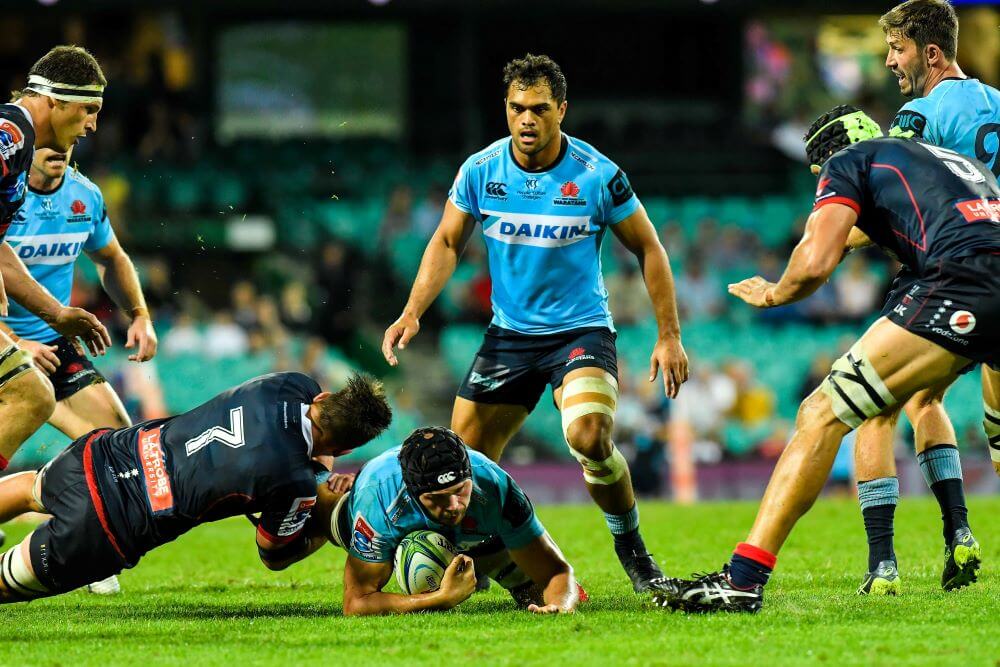
In the event of a loose ball in general play, the interaction of these rules theoretically means that a player diving on the ball will immediately be on the ground without having been tackled (due to not having been held and brought to ground by one or more defenders) and thus must not play the ball. In reality, these players are usually treated by referees as having been tackled even if a hand has not been laid on them, and are therefore given the opportunity to place the ball. Unfortunately, this creates a sort of rugby common law which has flow-on effects.
The sharpest among you will already be thinking of a similar event, altered slightly by circumstances where the loose ball is a few metres from the try line and the fullback is usually the player diving on it. Law 14 also states that “players on their feet and without the ball must not fall on or over players on the ground who have the ball or who are near it.” This law, in combination with the interpretation of the above law, has made it very safe for modern fullbacks to just dive on a dangerous loose ball and kill it. This is particularly the case since the timer for immediate placement of the ball by a tackled player is usually judged to begin only once the player’s momentum has ceased, and these dives often result in a lengthy slide over the grass. The chasing winger is unable to attempt a pilfer as the player on the ground is holding onto the ball, but they are very rarely pinged for this despite the rules requiring the fullback to make the ball available as soon as he grasps it.
This is similar to the issue created by a player being tackled and then released, but then getting back to their feet and going again. While this is occasionally penalised, you will just as often hear referees saying “not held” and allowing the ball-carrier to effectively have a second run. This goes completely against the rules, as the ball-carrier has been tackled and needs to make the ball available. Some intelligent players get around this by rapidly releasing the ball and picking it back up again in one movement, but the majority of the time this doesn’t occur and the result is wholly unfair to the defending team – they would have been penalised if they didn’t release the ball-carrier, after all.
This ties in to the other dubious tactic commonly employed by fullbacks, which is simply standing back up after diving on the ball. This is, of course, blatantly against the rules, but since the winger is not allowed to fall on the fullback some referees will rule that the fullback was not held and thus allowed to get back up – even though this goes against the common law created above (which equates a player diving on the ball to a tackled player who has the opportunity and the responsibility to make the ball available).
This is a consistent inconsistency. If the ball spills out of a ruck or a weak carry, the referee will treat the diving player as if they had been tackled. If the ball is deliberately kicked behind the defensive line, the referee will treat the diving player in the most favourable way possible: as if they had been tackled if the winger tries to tackle them, or as if they had not been tackled if the winger tries to pilfer the ball. The situations are not different according to the rules, but the human element that bridges the gap between the written words and their actual implementation has perceived them as different, and judges them as such.
Rolling Away at the Ruck
Almost every single law change made by World Rugby in recent years runs parallel with an obvious desire to make rugby a more entertaining spectator sport. There is a concurrent push for referees to take the side of the attacking team where possible, and many referees (particularly those hailing from France) nowadays prefer to primarily observe the defending team. There is some merit to this from a broader perspective, but there is a line that needs to be drawn to ensure that the game does not become farcical. The core mantra of rugby is that every facet of the game is a contest, and diluting this would significantly counteract the positive effects of making the professional game a more appealing spectacle.
The main issue here is that attacking and defending teams are adjudicated completely differently once the tackle has been made. As stated above, Law 14 requires the tackler to immediately release the ball and the ball-carrier, and the ball-carrier is similarly required to immediately make the ball available by placing it in any direction. This law also requires the tackled player to move away from the ball and ensure that they do not lie on, over, or near the ball to prevent opposition players from gaining possession of it.
How often have you seen this penalty awarded? Almost every Super Rugby match includes multiple penalties for the tackler not rolling away (usually because the attacking team has pinned them in the ruck to milk a penalty), but it is almost unheard of for the ball-carrier to be pinged for not rolling away despite the fact that they usually make nil effort to do so.
It is also rare for a penalty to be awarded for a supporting player not rolling away. As a result of this, penalties for not rolling away have become something that apply only to the defending team. Looking at a typical ruck in the modern game such as the one pictured below (from the recent match between the Reds and the Rebels, refereed by Angus Gardner), there are 3 attacking players and 1 defending player lying on the ground (the tackler, pinned by the attacking players), with only 1 player on their feet and dubiously onside. How is there supposed to be a contest at the ruck when it looks like this?
The World Rugby laws bring to mind the ideal “ruck” as being an improvised scrum, with the ball lying unhandled on the ground between the two sets of players trying to push each other off of it. And in fact, with tacklers being forced to roll away and Law 15 requiring arriving players to be on their feet, endeavour to remain on their feet, and move away from the ball if they end up on the ground, the only theoretical barrier to this becoming a reality is the tackled player continuing to lie on the ground in contravention of Law 14. Law 15 even includes the provisos that players involved in a ruck must have their heads and shoulders no lower than their hips (the same as required for the scrum under Law 19), and that a ruck may not be intentionally collapsed.
The reality is that every rugby player is required to roll away from the ball when on the ground, whether they be the ball-carrier, the tackler, or a player arriving at the ruck. Tacklers are often penalised for being pinned at the bottom of a ruck despite their best efforts, so intent is clearly not a factor, yet the tackled player almost never makes an attempt to get out and is never pinged. This is a consistent inconsistency, and one which removes the contest from the ruck. The only contest left at the ruck is to be the first man arriving and get your hands on it, and as this is one of the greyest areas in refereeing many teams are declining to attempt pilfers altogether as it is just as common for the penalty to go the other way. The current pushing contest is only ever won by defending teams in exceptional circumstances, usually when the attacking team fails to assign enough players to the ruck or when the ruck forms as the result of a kick chase and the chasing players arrive before the defenders. Both of these circumstances are rare in the modern game, and rely on mistakes or fatigue on the part of professional players.
Collapsing a Maul
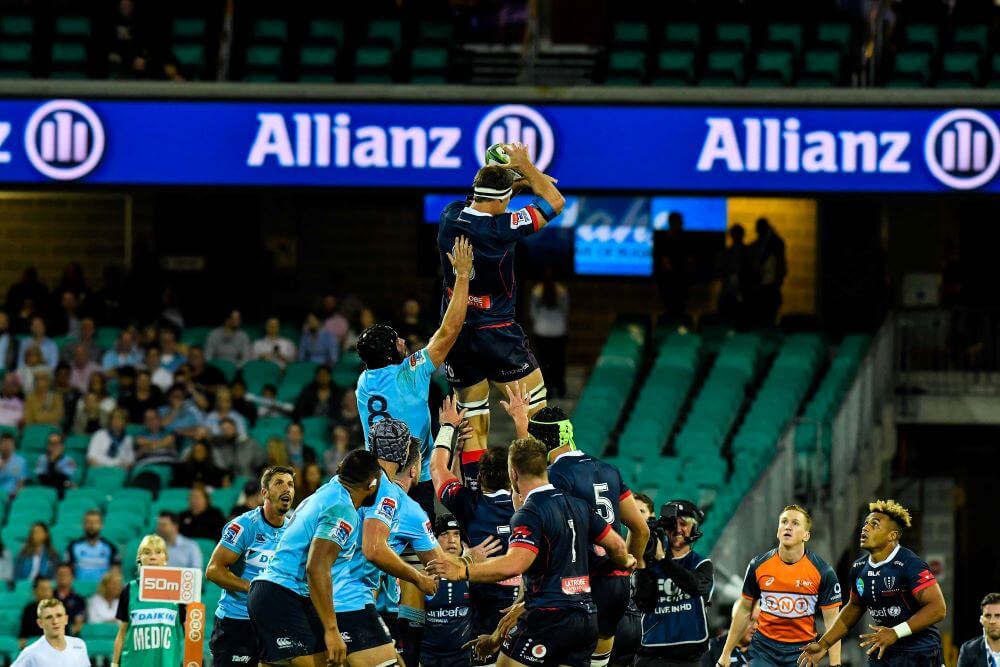
The third and perhaps most obvious consistent inconsistency occurs at the maul, which is when a ball-carrier and a defender are bound together and on their feet (as opposed to falling to ground and forming a ruck). There are two sorts of mauls, defensive, and offensive, and these are adjudicated completely differently despite both falling under Law 16 of the rulebook.
Offensive mauls usually occur off the back of a lineout, with the receiving player deliberately passing the ball backwards through bound players so that they cannot legally be brought to ground (as it is illegal to intentionally collapse a maul). At this point the maul is impossible to stop except by piling enough cumulative muscle mass in the opposite direction, or by “swimming” between players through the centre of the maul until the ball-carrier is within reach and then tackling them. A team that is skilled at offensive mauling, such as the Brumbies, will prevent both occurrences by setting the maul well in order to prevent swimming and to maximise the effectiveness of their cumulative muscle mass.
Defensive mauls have arisen more recently. They occur when a ball-carrier is held by a defender but deliberately not tackled by preventing their knee from hitting the ground. This results in either the players standing around until the referee blows the whistle, or more commonly an immediate collapse after the maul is called with the referee awarding the ball to the defending team. Neither is a good result for rugby.
If you were an avid reader of the rulebook but had never watched a game in your life, you would wonder why a tackler would want to hold up the ball-carrier. With an offensive maul, the attacking team has the opportunity to set the maul in such a way that it is virtually indefensible. Theoretically, the defensive maul could be used to push a team in possession backwards, but because there is no real opportunity to properly set the maul this is very uncommon.
Of course, the real reason is that once the maul collapses the ball is almost always awarded to the defending team. This is a result of Law 19, which has several “in the alternative” results.
It firstly states that if the ball is unplayable as the result of a maul collapsing, a scrum occurs with the ball in possession of the team not in possession at the start of the maul. Of course, if a ball-carrier is held up they will usually pass the ball in order to prevent a maul from forming, and as a result defensive mauls usually involve both the tackler and the original ball-carrier grabbing at the ball until the maul is called.
If this is the case, the scrum feed goes to the team which was moving forward before the maul collapsed. This is the justification most referees use to award possession to the defending team, even though many mauls do not move at all, and sometimes even move forward as players supporting the ball-carrier flood into the maul.
In the event that the maul was stationary, then the ball is awarded to the attacking team. Have you ever seen this occur?
For example, in the maul below, Michael Hooper is held up by the Sharks until the referee Nic Berry calls for a maul. The maul has absolutely 0 momentum and travels approximately 0 metres in either direction, but the scrum feed is handed to the Sharks anyway.
There are two consistent inconsistencies here. The first is that deliberately collapsing a maul is illegal. Just because the defending player has successfully held the ball-carrier up doesn’t mean that they can then collapse it– however this is typically the case in practice. Conversely, if a defending team collapses an offensive maul, they will be penalised. There is no mention of offensive and defensive mauls in the rules, it is only the human middleman who perceives the difference and wrongly offers different judgments in legally comparable situations.
The second consistent inconsistency is that once a defensive maul has collapsed (legally or illegally), the scrum feed is usually awarded to the defending team even if they were not pushing the maul forward. The rules state that the scrum feed should go to the attacking team unless the defending team had managed to push the maul forward before it collapsed, but this is not the case in practice – except with offensive scrums, which are usually adjudicated far more closely to the rules.
Further Issues
World Rugby continues to make the sport more entertaining for spectators, and by rewriting the law book to make it far simpler and shorter at the start of last year they have shown that accessibility is recognised as being an issue. Yet when the sport described in the rulebook is different to that being broadcast to casual viewers, is this really being achieved? The current state of affairs creates a barrier to entry for prospective fans and frustrates older fans.
There are other negatives that occur as corollary from these consistent inconsistencies. The fact that the defensive maul can be used to turn over the ball means that ball-carriers are increasingly diving at the ground when they are about to enter contact. This kills the offloading game that Southern Hemisphere teams thrive on and spectators tend to find entertaining (in my experience).
The non-existence of the pushing contest at the ruck has meant that pilfering is the most effective way of winning defensive rucks, but the mechanics of a player having their head down and being slammed into at high speed have created a safety risk which have seen turnover aficionados like David Pocock and Sam Cane take long stints on the sidelines with serious neck injuries.
The fact that the ball receiver can kill the contest for the ball once he has dived on it has made kick chases very anti-climactic. We are often forced to watch chasers stand around idly, too afraid of being penalised to act.
Additionally, they introduce an element of unaccountability into the sport. We can criticise World Rugby’s laws and our national unions can push for changes to them, but these “common law” interpretations are made by referee associations and multi-national board executives without any official alterations in wording being disclosed to the public, thereby bypassing the established processes.
The consistent inconsistencies need to be stamped out, or if they are deemed to be desirable, enshrined in the written law of our game. It may be impossible to ensure that every refereeing decision is made correctly in the heat of a fast-paced game, but the least we can do is give them a consistent rulebook to base their decisions on.

